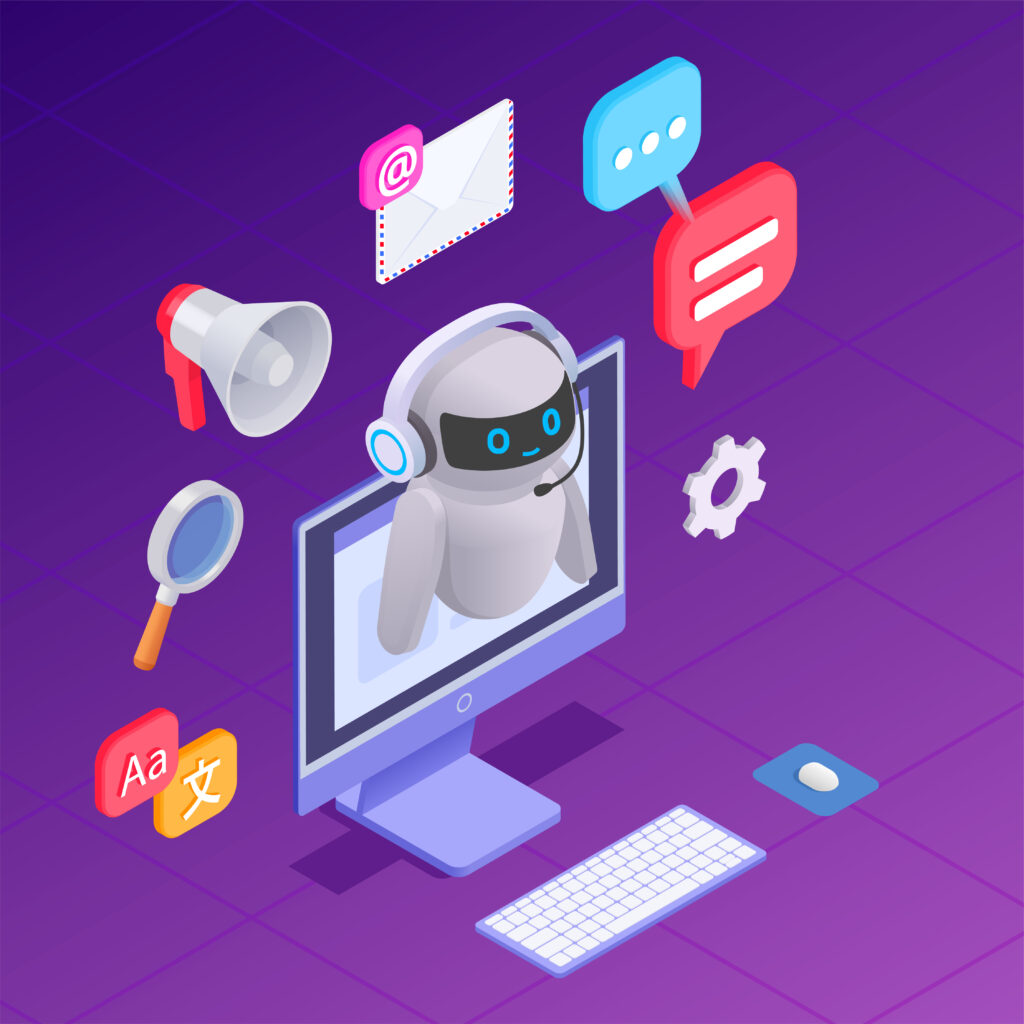Enhancing Customer Experience with AI-Powered Chatbots on AWS
In today’s fast-paced digital world, delivering exceptional customer support is crucial for businesses looking to maintain a competitive edge. As technology continues to advance rapidly, artificial intelligence (AI) has become a key tool for enhancing the customer experience. In this guide, we will delve into how businesses can harness the power of Amazon Web Services (AWS) to create AI-driven chatbots that can transform customer support.
The Importance of Customer Experience
Before delving into the world of AI-powered chatbots, let’s understand why customer experience matters. Customer experience encompasses every interaction a customer has with a brand, from browsing a website to seeking assistance with a product or service. Exceptional customer experience not only fosters loyalty but also drives revenue growth. According to a survey by PwC, 73% of consumers point to customer experience as a crucial factor in their purchasing decisions.
To discover more ways to improve customer experience download our free eBook, “Roadmap to Exceptional Customer Experience”

The Rise of Chatbots
Chatbots have become integral to modern customer support strategies. These AI-driven virtual assistants are available 24/7, providing instant responses to customer queries. They streamline interactions, reduce response times, and free up human agents for more complex tasks. However, to truly enhance customer experience, chatbots need to be intelligent and seamlessly integrated into the business ecosystem.
Leveraging AWS for AI-Powered Chatbots
Amazon Web Services (AWS) opens up a world of possibilities for enhancing your chatbot capabilities. With AWS, you can leverage a suite of robust tools and services designed to supercharge your chatbot’s performance and elevate your customer engagement.
1. Scalability and Flexibility
AWS offers scalable resources, allowing chatbots to handle increased workloads during peak times without compromising performance. This flexibility ensures that your chatbots are always available to assist customers.
2. Advanced Machine Learning
AWS offers a powerful duo in the form of Amazon Lex and Amazon Polly, which greatly enhance chatbot capabilities:
Amazon Lex is a sophisticated natural language understanding service. It equips chatbots with the ability to not just recognize, but truly understand, the nuances of human language. Lex can handle conversational interactions, supporting multiple languages, and even managing context. This means your chatbots can engage in more dynamic and context-aware conversations with customers, leading to more personalized and effective interactions.
Amazon Polly, on the other hand, is a text-to-speech service that goes beyond mere speech generation. Polly’s lifelike voice synthesis can make your chatbots sound remarkably human. This contributes to a more engaging and pleasant customer experience, as customers interact with chatbots that convey information and responses in a natural and expressive manner.
Together, Amazon Lex and Amazon Polly bring a higher level of sophistication to your chatbots, enabling them to understand, process, and communicate with customers in a way that feels almost human. This elevates the quality of interactions and significantly improves the overall customer experience.
3. Integration Capabilities
AWS chatbots can seamlessly integrate with various business systems, including CRM software and eCommerce platforms. This means that chatbots can access and update customer information in real-time, providing personalized assistance.
4. Cost-Effective Solution
AWS follows a pay-as-you-go pricing model, which means businesses only pay for the resources they use. This cost-effective approach ensures that even small and medium-sized enterprises can benefit from AI-powered chatbots.

Building Your AI-Powered Chatbot on AWS
Now, let’s outline the steps to build your AI-powered chatbot on AWS:
Step 1: Define Objectives
Clearly define the objectives of your chatbot. Determine the specific tasks it will perform, whether it’s answering frequently asked questions, assisting with product recommendations, or processing orders.
Step 2: Design Conversational Flow
Design the conversational flow of your chatbot. Map out possible user queries and create responses that align with your brand’s tone and style. Ensure that the chatbot can gracefully handle unexpected user inputs.
Step 3: Choose AWS Services
Select the appropriate AWS services for your chatbot. As described above, Amazon Lex is an excellent choice for natural language understanding, while Amazon Polly can generate lifelike speech responses.
Step 4: Development and Testing
Develop your chatbot using AWS services and continuously test it to refine its responses and capabilities. Ensure that it provides accurate and relevant information to users. A few things that you should be sure to regularly monitor are listed below:
- Assess the clarity and consistency of chatbot responses to enhance the user experience.
- Ensure that the chatbot understands and responds to user queries effectively by testing its natural language understanding.
- Test the chatbot’s ability to integrate with other systems.
- Measure response times and scalability during peak usage for performance testing.
- Continuously analyse user feedback and make improvements to the chatbot accordingly for continuous iteration.
Step 5: Integration
Integrating your chatbot across various customer touchpoints is vital for delivering an exceptional user experience (UX). This involves creating a seamless user journey, enabling customers to transition effortlessly between the chatbot and other channels. The integration should be intuitive, ensuring conversation continuity regardless of the touchpoint. Monitoring your chatbot’s performance is equally critical, involving tracking metrics like response times, completion rates, and user feedback. This ongoing assessment helps identify areas for enhancement and ensures consistent, efficient interactions with your chatbot.
Step 6: Continuous Improvement
Regularly analyse user interactions and feedback to make improvements to your chatbot. Update its knowledge base and capabilities to meet evolving customer needs.
Conclusion
Leveraging AWS for building AI-powered chatbots is a strategic move for businesses looking to enhance customer experience. These chatbots, powered by AWS’s scalable resources and advanced machine learning, can revolutionize customer support by providing instant, personalized, and efficient assistance. By following the steps outlined in this guide, businesses can harness the power of AI to create chatbots that not only meet but exceed customer expectations, ultimately driving growth and success in the digital age.
For more information on AI-managed services on AWS, click here.
